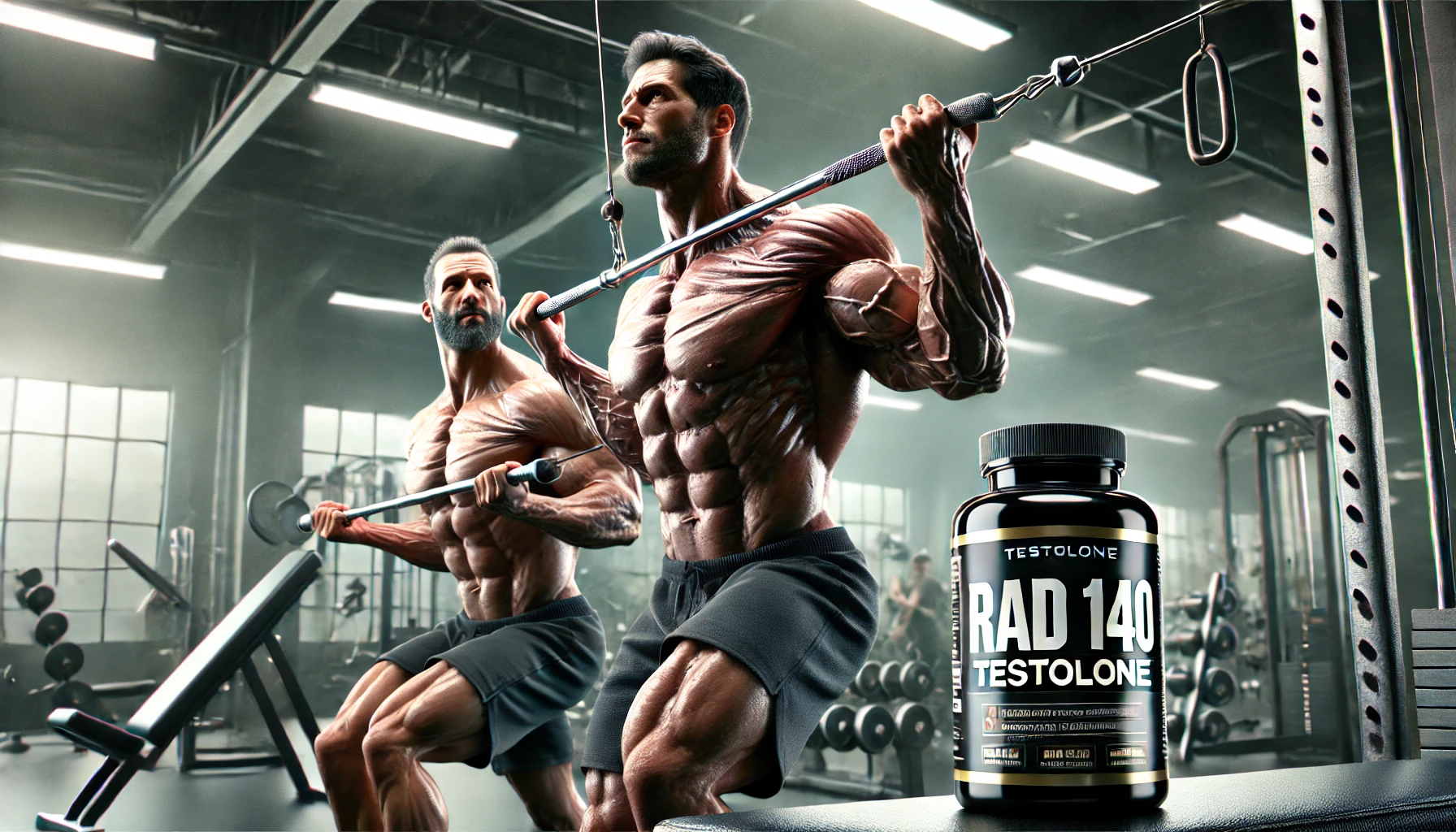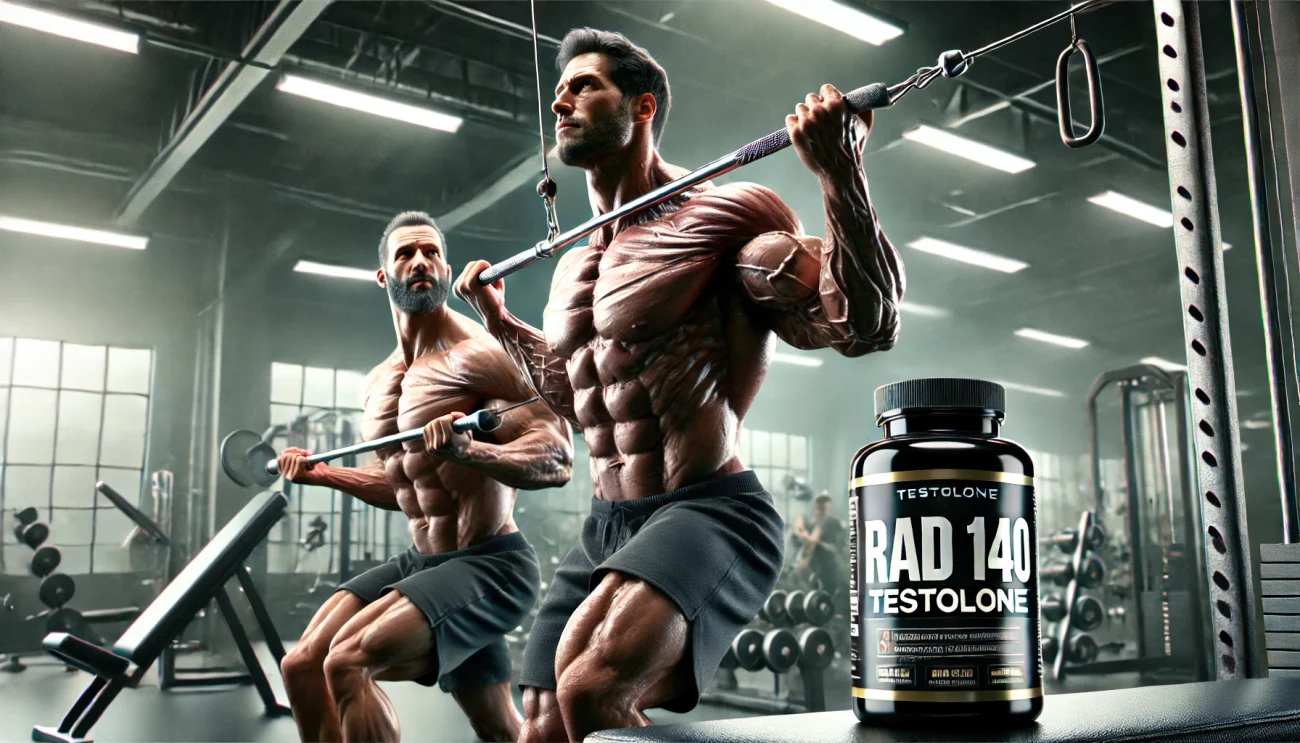Testolone vs Ligandrol Results: A Bodybuilders Guide


Testolone vs Ligandrol results often intrigue bodybuilders seeking efficient ways to maximize lean muscle growth. Both compounds, classified as Selective Androgen Receptor Modulators (SARMs), have caught attention for their potential to mimic certain anabolic effects while reportedly limiting harsh side effects. According to a 2024 consumer survey on performance-enhancing compounds, about 58% of participants named Testolone (RAD-140) and Ligandrol (LGD-4033) among their top choices for muscle gains. This article reviews how each compound works, compares their reported outcomes, and outlines realistic tips for safer use.
Understanding Testolone (RAD-140)
Testolone, also referred to as RAD-140, is a compound designed to bind with androgen receptors primarily in muscle and bone tissue. This targeted mechanism may lead to muscle development without the extensive side effects that come from traditional anabolic steroids. Because of this specificity, Testolone has attracted noticeable interest among competitive athletes and recreational bodybuilders.
Third-party anecdotal reports often highlight the potential benefits of RAD-140 in strength and endurance, along with moderate fat loss. Some individuals suggest that it may deliver improved recovery times, enabling them to complete tougher workouts more frequently. However, Testolone is still considered experimental in clinical settings, and there is limited long-term research confirming its safety. As with all SARMs, users are encouraged to exercise caution, maintain consistent blood work checkups, and watch for any unwanted reactions.
Reported Benefits of Testolone
- Potential for lean muscle gains due to selective androgen receptor targeting
- Possible increases in strength and workout endurance
- Shorter downtime after high-intensity training
- Less risk of hair loss or severe masculinizing effects than some steroids
Potential Drawbacks
- Hormonal suppression can occur, resulting in lowered natural testosterone
- Limited long-term research, so adverse effects cannot be fully ruled out
- May require post-cycle therapy (PCT) to support hormone balance
Exploring Ligandrol (LGD-4033)
Ligandrol, commonly called LGD-4033, is another SARM recognized for its strong interaction with androgen receptors in muscle tissues. It originated from research in muscle-wasting conditions, with preliminary findings suggesting that LGD-4033 might help preserve or even increase muscle mass in patients facing degenerative loss. Over time, bodybuilders noticed these properties and began experimenting with the compound as part of performance regimens.
Some third-party user logs point to a gradual uptick in overall muscle mass and strength among those who experimented with Ligandrol. Though direct scientific data on healthy individuals is still scarce, it is often mentioned for its relatively consistent gains, especially when combined with calorie-sufficient diets and structured resistance training routines.
Reported Benefits of Ligandrol
- Steady increases in lean mass, often in shorter cycles
- Potential for improved bone density, which may reduce injury risk
- Noticeable strength increments in multi-joint exercises (squats, bench press)
- May be easier to integrate into a range of diet and workout programs
Potential Drawbacks
- Suppression of natural testosterone, leading to potential fatigue or mood changes
- Water retention in some cases, making weight fluctuations more pronounced
- Possible lipid profile fluctuations (including higher bad cholesterol)
- Need for monitoring long-term health markers
Evaluating Testolone vs. Ligandrol
Testolone vs. Ligandrol experiences have subtle differences, though both are described as potent SARMs. The choice between them largely hinges on each person’s goals, genetic response, and tolerance to potential side effects. It is often helpful for individuals to review a testolone vs ligandrol comparison that highlights the distinct nature of these two compounds.
Below is a summary table that underlines some key features of both options:
| Factor | Testolone (RAD-140) | Ligandrol (LGD-4033) |
|---|---|---|
| Target Audience | Bodybuilders seeking moderate to high strength gains | Bodybuilders seeking steady muscle size progression |
| Typical Dosage Range (Research) | 10–20 mg per day (tentative) | 5–10 mg per day (tentative) |
| Half-Life (Anecdotal Estimates) | ~16–20 hours | ~24–36 hours |
| Possible Gains | Noticeable strength improvements, moderate mass | Emphasis on mass accumulation and fuller physique |
| Potential Side Effects | Hormonal suppression, mild aggression, fatigue | Hormonal suppression, water retention, cholesterol shifts |
Gains and Strength
When focusing on testolone vs ligandrol gains, anecdotal user logs suggest that RAD-140 may support faster strength spikes, while LGD-4033 may demonstrate a more gradual, steady mass buildup. In third-person examples, some individuals report a 5–10% overall strength rise when using Testolone, especially in compound barbell lifts. By contrast, those who tried Ligandrol often point to a visible increase in size (particularly around larger muscle groups) within a few weeks.
Potential Side Effects
Both SARMs can cause hormonal suppression, which might manifest as lower libido, fatigue, or mood swings if used in high amounts or for extended durations. Researchers underscore the value of post-cycle therapy to restore natural testosterone production. Although serious side effects are not guaranteed, each person’s biology differs. Safety steps, like blood tests and consistent medical follow-up, are prudent.
Cycle Duration
Most individuals who experiment with either SARM tend to keep cycles between 6 and 12 weeks. However, a testolone vs ligandrol cycle exceeding 12 weeks may heighten risks of side effects and more significant testosterone suppression. With either compound, it is typical to see:
- Initial gains in strength or muscle volume within the first 4 weeks
- A plateau or slowdown in gains toward the end of a cycle
- Gradual return to pre-cycle hormone levels after completion
If someone is pursuing short-term bulking, a 6–8 week cycle might be enough, while those aiming for more pronounced changes might consider 10–12 weeks, balanced by thorough health surveillance.
Usage in Bodybuilding
Bodybuilders sometimes incorporate testolone vs ligandrol bodybuilding protocols to see which compound fits best with their training volume, dietary regimen, and competition objectives. Professional advisors may highlight stacking strategies, but these should not be attempted without full knowledge of SARM interactions and disclaimers about legality. Different organizations have varying rules regarding performance-enhancing substances, so it is wise for competitive athletes to stay informed.
Tips For Safer Use
Although there is no completely safe route when introducing new performance compounds, a few precautions can lower risks. Since SARMs remain under investigation, it often helps to act conservatively, track health markers, and discontinue usage if negative symptoms arise.
Stay Informed With Medical Advice
It is usually wise for individuals to speak with a healthcare professional experienced in sports medicine before starting any SARM. Comprehensive blood work, including hormone levels, liver enzymes, and cholesterol tracking, can offer early warnings about adverse reactions.Begin With Lower Dosages
Starting at the lower end of the recommended range allows the body to adjust and helps detect side effects sooner. If adverse effects arise, many suggest stopping the compound well before the situation escalates.Monitor Diet and Training
SARMs are not magic pills. Real progress comes from consistent, structured workouts and balanced nutrition plans that support muscle repair and growth. High protein intake, moderate carbs, and healthy fats can maximize the potential benefits of either Testolone or Ligandrol.Plan Post-Cycle Therapy
Because testolone vs ligandrol results can involve hormone suppression, a suitable post-cycle therapy (often lasting 4 weeks) is common. This phase might include supplements or prescription medications to support the restoration of natural testosterone. Each user should plan accordingly to maintain gains and overall well-being.Evaluate Supplements Carefully
Some third-party retailers offer products labeled as SARMs but include unknown ingredients, which can lead to serious issues. Independent lab testing or known quality checks can help reduce the chance of contamination.
How Bodybuilders Decide
Each bodybuilder has unique goals. Some are focused on short bursts of major strength progress, while others prefer a slower-burning, more controlled muscle-building trajectory. Testolone’s supporters typically cite the sharper rises in raw power and intensity. Ligandrol’s advocates often mention the reliable growth in visible muscle fullness. Both parties might agree that intelligent training, consistent rest, and a disciplined nutritional approach still matter more than any single compound.
In everyday practice, a cautious approach to dosage, cycle length, and synergy with overall health should guide the selection. It is also helpful to remember that no supplement, including SARMs, can replace work ethic or a balanced plan. Many experienced fitness enthusiasts say the best approach remains understanding personal limits and training in a sustainable manner.
Conclusion And Next Steps
Testolone vs. Ligandrol results can be compelling for individuals aiming to shape a leaner, stronger physique. Although small-scale observations show promising outcomes, ongoing research continues to explore how safe and effective these chemicals are over the long run. When it comes to performance enhancement, each person’s genetic makeup, tolerance, and discipline can make or break the final outcome.
For those who want to dig deeper into the complexities of Testolone vs. Ligandrol, this specialized comparison offers further insight into the differences. Anyone serious about these compounds is encouraged to safeguard their health by monitoring hormone levels and working with medical professionals whenever possible.
Good news, there is a dedicated resource that can clarify uncertainties. By visiting the experts at SarmsCentral.ca, bodybuilders can find helpful guidance, product information, and professional perspectives that they might otherwise miss. This added support often makes the difference between guesswork and an informed approach.
Frequently Asked Questions
1. Are Testolone and Ligandrol Legal to Buy?
They are often sold as “research chemicals.” Regulations vary widely by region, and certain sports organizations ban them. Individuals should check local laws and sporting guidelines before making a purchase.
2. Which One Is Better for Bulking?
Bulking results depend on genetics, diet, and training consistency. Testolone may offer slightly faster strength gains, while Ligandrol may promote steadier mass growth. However, each person’s response can be different.
3. Do They Require Post-Cycle Therapy?
Yes. Both compounds can suppress natural testosterone levels. Many individuals need a post-cycle therapy phase to help hormones reset. A typical PCT might last 4 weeks, but that duration can vary by personal health status.
4. Is Stacking Testolone and Ligandrol Advisable?
Some advanced users experiment with combining SARMs. However, stacking may heighten the risks of side effects, seriously affecting hormone balance. It is generally considered best for advanced or monitored usage only.
By staying informed and monitoring health, bodybuilders seeking to enhance muscle tone or strength with these compounds can better navigate the possibilities. The future should bring greater clarity on how safe and productive SARMs are, but current knowledge still points to the importance of an educated, cautious approach.
